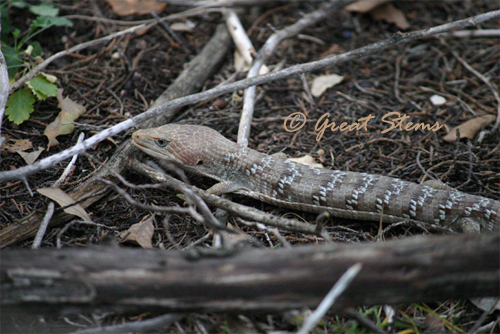 Its name implies something much more frightening — something along the lines of a Komodo dragon — but the Texas Alligator Lizard (Gerrhonotus infernalis) only reaches about 2 feet long at its maximum. Even so, it’s the largest native lizard in Texas, and it’s one of the largest alligator lizards period. This one is about 14 inches long.
Its name implies something much more frightening — something along the lines of a Komodo dragon — but the Texas Alligator Lizard (Gerrhonotus infernalis) only reaches about 2 feet long at its maximum. Even so, it’s the largest native lizard in Texas, and it’s one of the largest alligator lizards period. This one is about 14 inches long.
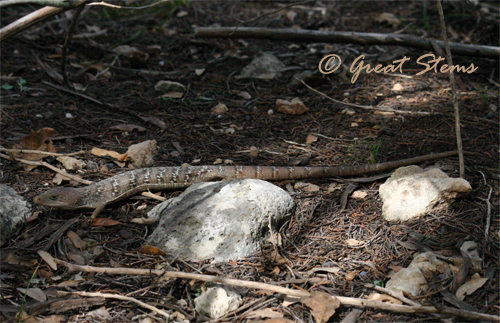 The lizard happened to be spotted during a native plant rescue at a construction site near Lake Travis — a lovely habitat that will sadly succumb to development soon, becoming a water treatment plant. Our local Native Plant Society and dedicated habitat volunteers organize plant rescues from such situations whenever possible — some plants are given back to the city for habitat restoration, and the rest go to the volunteers who dig them up. But today, plants weren’t all that were rescued — a City of Austin biologist will be bringing this lizard to a new home, I believe at the Balcones Preserve. It only seemed right — its original habitat is being destroyed.
The lizard happened to be spotted during a native plant rescue at a construction site near Lake Travis — a lovely habitat that will sadly succumb to development soon, becoming a water treatment plant. Our local Native Plant Society and dedicated habitat volunteers organize plant rescues from such situations whenever possible — some plants are given back to the city for habitat restoration, and the rest go to the volunteers who dig them up. But today, plants weren’t all that were rescued — a City of Austin biologist will be bringing this lizard to a new home, I believe at the Balcones Preserve. It only seemed right — its original habitat is being destroyed.
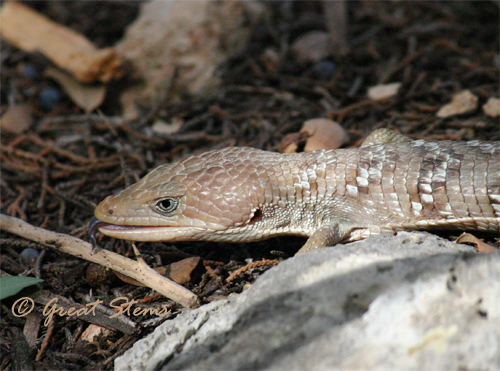 The Texas Alligator Lizard likes rocky hillsides. It moves fairly slowly on its short little legs, making it relatively easy for the biologist to capture the one at the plant rescue. Its slow movement also made it easy for me take some, you know, 100 pictures (I’m not joking). You can see by this next expression that the lizard might possibly have been getting annoyed with my zealous image-snapping.
The Texas Alligator Lizard likes rocky hillsides. It moves fairly slowly on its short little legs, making it relatively easy for the biologist to capture the one at the plant rescue. Its slow movement also made it easy for me take some, you know, 100 pictures (I’m not joking). You can see by this next expression that the lizard might possibly have been getting annoyed with my zealous image-snapping.
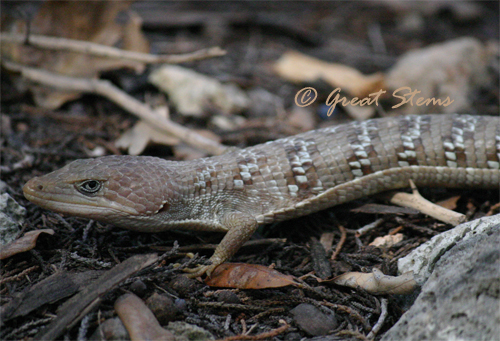
Though not the most colorful of lizards, it’s still handsome in its pale-scale armor.
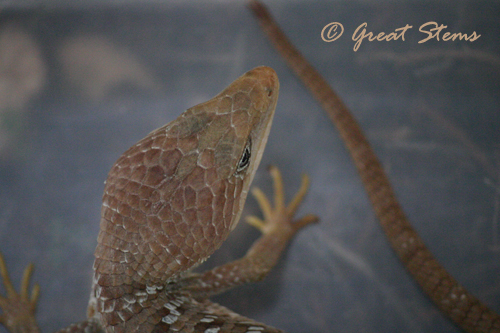
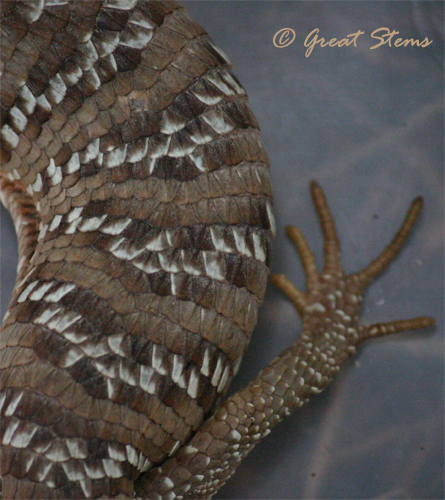 It has a blue, quick-to-flick tongue, and the neatest little digits.
It has a blue, quick-to-flick tongue, and the neatest little digits.
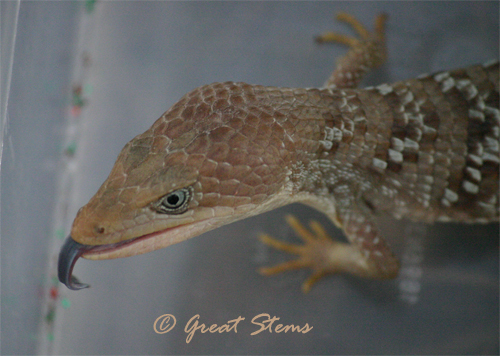
It breaks my heart to know that so many native plants and animal homes are going to be wiped out, but I’m grateful for all the plant volunteers and rescuers and happy that at least the lizard has a chance to survive.
As for me, I managed to rescue some Rusty Blackhaw Viburnums, Silk Tassel, Yellow Passionflower, and Flameleaf Sumac. The soil was incredibly rocky, making it difficult to get plants out without damage to the roots. We’ll see what survives — at least everything is in the ground, watered, and treated with seaweed! I’m particularly excited about the Flameleaf Sumac — I very much admire its fall colors.
We have a big cold front coming through, so I’ve begun the usual massive watering process. I also planted more than two flats worth of 4-inch plants I still hadn’t planted since I bought them in October (all my gardening has been at the school lately). I figure the little plants have a better chance of surviving in the ground than being stuck in my garage, where they would both freeze and suffer from my neglectful watering. In all I planted close to 60 plants this afternoon and evening, including the ones I rescued. What a day — plants rescued, plants planted, lizard saved. I hope you like your new home, little big lizard.
Will you take us on a visit to the Balcones Preserve? We might see him there again? (Preserve is something made of fruit that I spread on toast ;>)
The lizard photos are great! You wouldn’t think they could do the annoyed look so well. And, yeah, I need to get on that pre-freeze plant protection, too…
Love the lizard photos! I found my only alligator lizard in AZ several years back it was a small one maybe 7 inches. Hope your plants do well especially that cool sumac.
Oh, I’d love to see one of these in my garden. I’ve got lots of Texas Spiny Lizards which look similar (only not so long). I hope all of your rescued plants do well, too! We are expecting chilly temps tonight here in north TX as well. Stay warm!
It always breaks my heart to see habitat destroyed, and most of the time there are no volunteers to help out. Good for you for caring for the native plants and critters.
Nice photographs. I saw one of those at my parents peach orchard 25 years ago. Neat creatures. Glad this one has somewhere safe to go.
Thanks, everyone — let’s all hope for the best for this little guy. And yes, Diana, I’ll do my best to make a trip to the preserve. I’ll wait until spring, though, to capture it with plenty of new green growth!
Funny how this little guy was eyeballing you. I’m glad you got to rescue him – too bad he had to be rescued in the first place.
Oh, btw – I finally made and posted the bean mosaic you inspired me to make way back when you did yours. 🙂
I just checked it out, Wendy — simply wonderful, as are all the other gifts you showcased. Happy holidays!